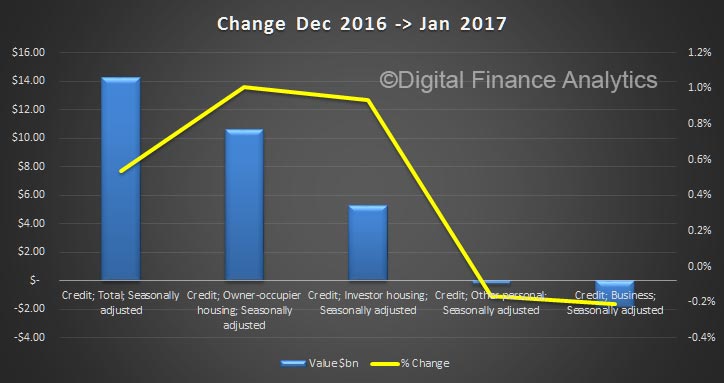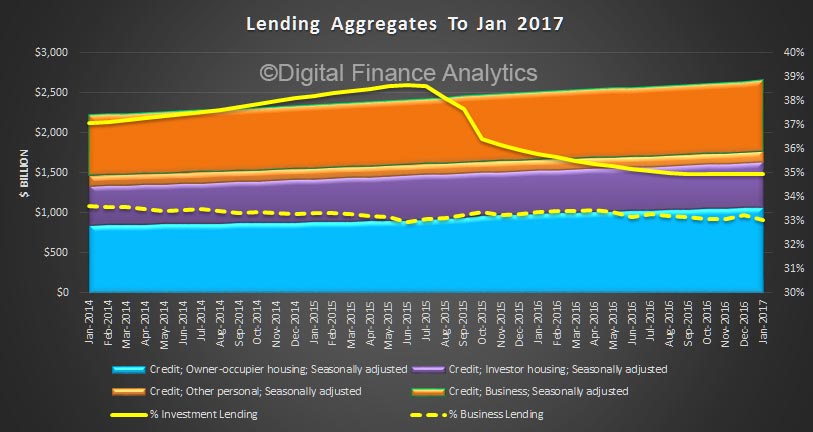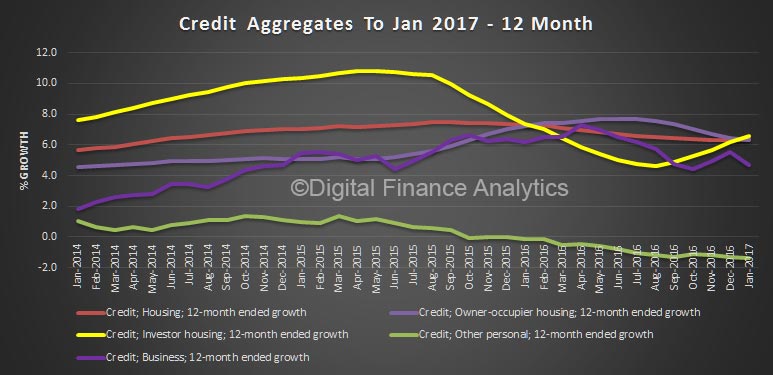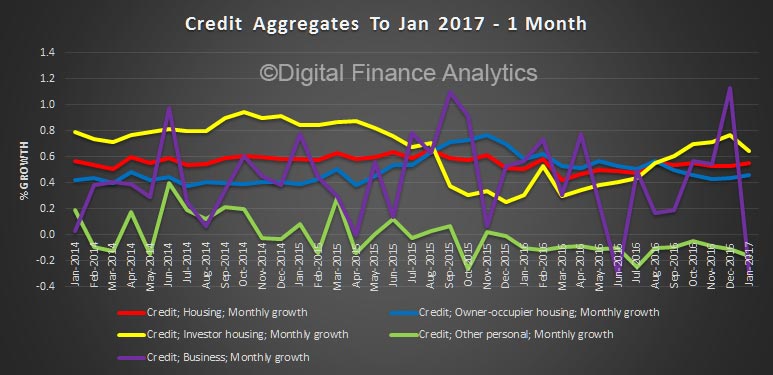The latest RBA credit aggregate data shows that total lending grew in January 2017 by $14 billion, or 0.5%. Of that housing rose to $1,637.4 billion, up 1% or $15.2 billion. Business lending and unsecured personal finance fell. Clearly housing is where the action is, and given this data and strong clearances, home prices, especially in the eastern states are likely to continue to rise. It also explains the RBA’s recent comments and APRA’s tighter lending guidance. Household debt climbs ever higher, with the risks to match! No way can the RBA cut the cash rate on these numbers.
 We see investment lending remained strong at $5.3 billion (0.9%) whilst owner occupied loans grew by $10 billion (1%). Investment loans were one third of all housing loans written.
We see investment lending remained strong at $5.3 billion (0.9%) whilst owner occupied loans grew by $10 billion (1%). Investment loans were one third of all housing loans written.
 The adjusted annual growth rates for housing loans was 6.4%, with owner occupied loans growing at 6.3% and investment loans 6.6%. Business lending was at 4.7% and personal credit a negative 1.3%.
The adjusted annual growth rates for housing loans was 6.4%, with owner occupied loans growing at 6.3% and investment loans 6.6%. Business lending was at 4.7% and personal credit a negative 1.3%.
 The monthly movements are more noisy, but housing rose 0.5%, the same as a year ago.
The monthly movements are more noisy, but housing rose 0.5%, the same as a year ago.
All growth rates for the financial aggregates are seasonally adjusted, and adjusted for the effects of breaks in the series as recorded in the notes to the tables listed below. Data for the levels of financial aggregates are not adjusted for series breaks. Historical levels and growth rates for the financial aggregates have been revised owing to the resubmission of data by some financial intermediaries, the re-estimation of seasonal factors and the incorporation of securitisation data. The RBA credit aggregates measure credit provided by financial institutions operating domestically. They do not capture cross-border or non-intermediated lending.
Following the introduction of an interest rate differential between housing loans to investors and owner-occupiers in mid-2015, a number of borrowers have changed the purpose of their existing loan; the net value of switching of loan purpose from investor to owner-occupier is estimated to have been $49 billion over the period of July 2015 to January 2017, of which $1 billion occurred in January 2017. These changes are reflected in the level of owner-occupier and investor credit outstanding. However, growth rates for these series have been adjusted to remove the effect of loan purpose changes.
We will look at the APRA ADI data later.


One thought on “Lending Growth All About Housing”